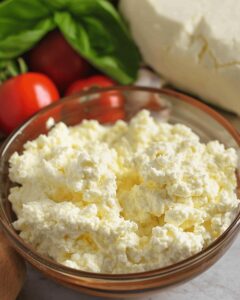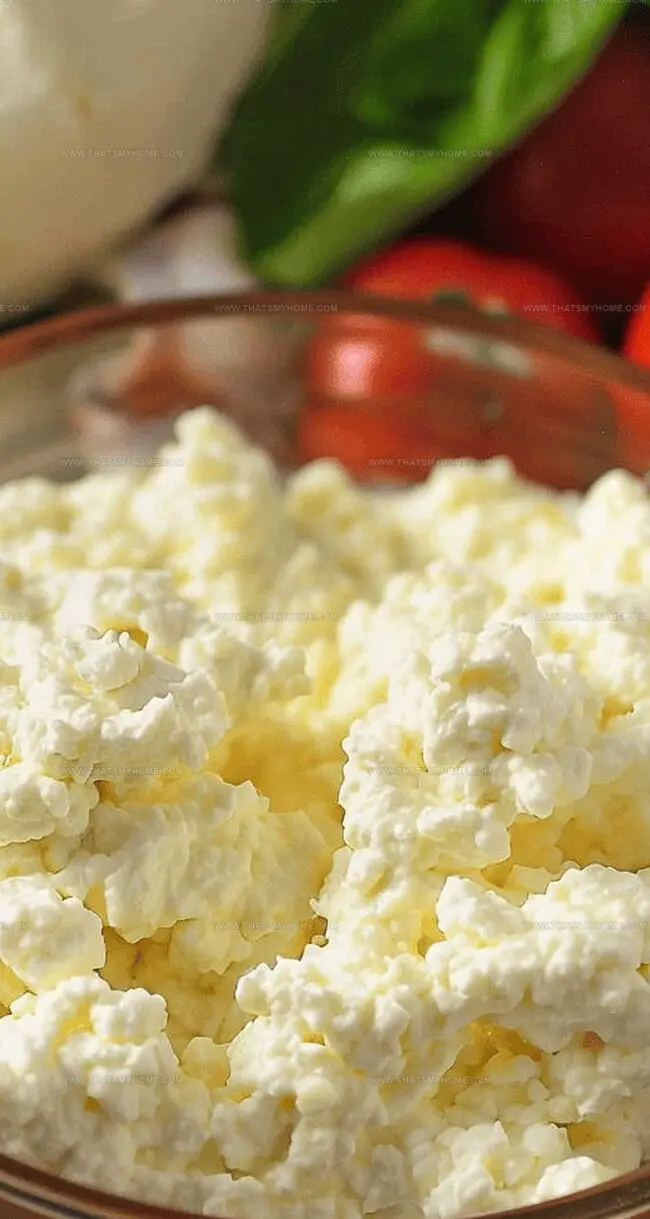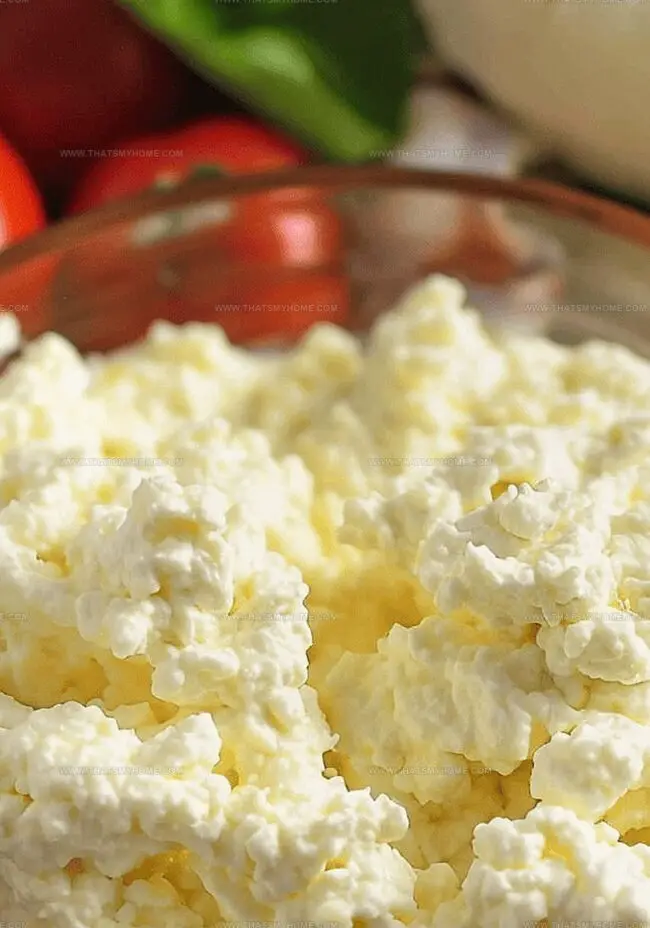The Perfect Homemade Ricotta Cheese Recipe: Creamy & Simple
Ricotta cheese crafts ordinary ingredients into extraordinary culinary experiences.
This magical dairy creation whispers stories of traditional kitchens and generations of passionate cooking.
Soft and delicate, ricotta carries a subtle richness that dances across different dishes with graceful versatility.
Crafting your own batch feels like uncovering a delicious secret passed down through family traditions.
Simple ingredients combine through an almost magical alchemy, converting basic milk into something wonderfully creamy and luxurious.
Home cheesemaking connects you to ancient techniques while delivering fresh, vibrant flavors that commercial products cannot replicate.
Prepare to elevate your cooking with this incredibly adaptable ingredient.
Creamy Homemade Ricotta Cheese: A Must-Have
Essential Ingredients for Homemade Ricotta Cheese
Main Ingredients:
Dairy:Acid Ingredients:Additional Ingredients:How to Make Homemade Ricotta Cheese
Step 1: Prepare Milk Base
In a large pot, combine milk and salt. Heat the mixture over medium-high heat, stirring occasionally, until it reaches 185°F or starts to simmer gently without boiling.
Step 2: Trigger Curdling Process
Step 3: Allow Milk to Rest
Gently stir the mixture again, then turn off the heat. Let the mixture sit undisturbed for 10 minutes to complete the curdling process.
Step 4: Set Up Straining Station
Step 5: Strain Cheese Curds
Carefully pour the curdled milk mixture into the lined colander.
Step 6: Drain Excess Liquid
Step 7: Store Fresh Ricotta
Transfer the strained ricotta cheese into an airtight glass container and refrigerate until ready to use.
Tips for the Perfect Homemade Ricotta Cheese
Storing and Reheating Homemade Ricotta Cheese
Pairing Homemade Ricotta Cheese with Pastas
Fun Variations of Homemade Ricotta Cheese
Print
Homemade Ricotta Cheese Recipe
- Total Time: 30 minutes
- Yield: 4 1x
Description
Homemade ricotta cheese brings Italian culinary magic to kitchen counters with minimal ingredients and simple techniques. Creamy, fresh results reward home cooks with a luxurious spreadable cheese you can savor on toast, salads, or pasta dishes.
Ingredients
Main Ingredients:
- ½ gallon (1.89 liters) whole milk
Main Acidifying Agent:
- 2 tablespoons (30 milliliters) lemon juice or apple cider vinegar
Seasoning:
- 1 teaspoon (5 grams) sea salt
Instructions
- Select a heavy-bottomed pot and combine whole milk and kosher salt, creating a creamy base for transformation.
- Gradually heat the milk mixture over medium-high temperature, stirring intermittently until it reaches 185°F (85°C) or develops a gentle steaming surface without aggressive boiling.
- Introduce freshly squeezed lemon juice or apple cider vinegar into the heated milk, which will instantaneously trigger protein separation.
- Reduce heat to medium and allow gentle chemical reaction to occur for approximately 60 seconds, observing delicate curdle formation.
- Remove pot from heat source and let the mixture rest undisturbed for 10-12 minutes, permitting complete protein coagulation.
- Prepare a large colander by lining it with four layers of clean cheesecloth, positioning it above a deep catching bowl to collect whey drainage.
- Carefully transfer the curdled milk mixture into the cloth-lined colander, allowing natural gravitational separation.
- Gently gather cheesecloth edges, creating a suspended pouch by tying corners and hanging over a wooden spoon across the pot’s rim.
- Allow ricotta to drain for 1.5-2 hours, depending on desired moisture consistency.
- Transfer the freshly crafted ricotta into a sealed glass container, refrigerating immediately for optimal preservation up to 5-7 days.
Notes
- Homemade cheese-making transforms simple ingredients into a creamy, luxurious spread with minimal kitchen effort.
- Whole milk provides the richest base, creating a smoother texture compared to low-fat alternatives.
- Freshly squeezed lemon juice works better than bottled varieties, delivering brighter acidic notes for optimal curdling.
- Draining time impacts final ricotta consistency, with shorter periods yielding softer cheese and longer durations producing firmer results.
- Storing ricotta in an airtight container helps maintain freshness and prevents absorption of other refrigerator odors.
- Leftover whey can be used for baking, smoothies, or watering plants, reducing kitchen waste and adding nutritional value.
- Prep Time: 10 minutes
- Cook Time: 20 minutes
- Category: Snacks, Appetizer
- Method: Simmering
- Cuisine: Italian
Nutrition
- Serving Size: 4
- Calories: 110
- Sugar: 1 g
- Sodium: 120 mg
- Fat: 9 g
- Saturated Fat: 5 g
- Unsaturated Fat: 4 g
- Trans Fat: 0 g
- Carbohydrates: 2 g
- Fiber: 0 g
- Protein: 7 g
- Cholesterol: 30 mg




Mary Ellen
Founder, Pastry Chef & Recipe Developer
Expertise
Education
Savannah Technical College
Mary Ellen is the heart and soul of thatsmyhome.com. As the founder, pastry chef, and recipe developer, she refined her skills at Savannah Technical College with an Associate of Applied Science in Culinary Baking & Pastry Arts.
Mary blends classic techniques with modern twists to make artisanal breads, beautifully crafted pastries, and desserts full of unique flavor. Her passion is evident in every recipe, and she enjoys sharing her expertise through hands-on pastry workshops and insightful articles in local culinary magazines.